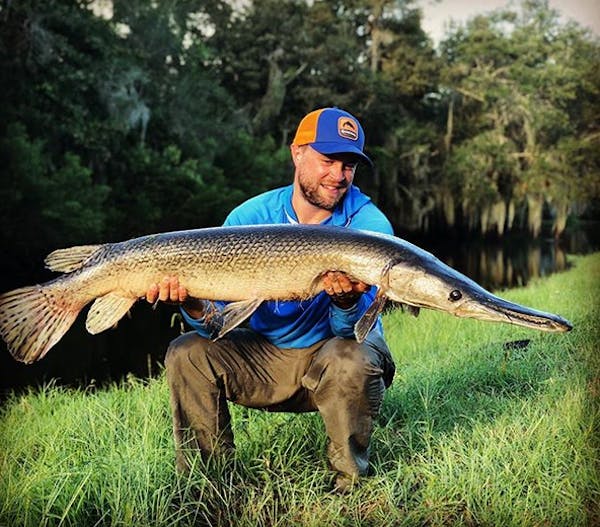LITCHFIELD, MINN. – Scott Glup cast an eye toward three tractors that sat idle on a large tract of land near this town of 6,700 west of the Twin Cities. "In a less rainy year,'' he said, "their work would be done by now.''
Glup, the U.S. Fish and Wildlife Service project leader for the Litchfield Wetland Management District, was lamenting that the extensive upland and wetland wildlife habitat work his crews are responsible for each spring and summer has been delayed considerably — and in some instances postponed until next year — due to heavy and persistent rains.
The tractors were parked on a large federal Waterfowl Production Area (WPA) that was scheduled to be burned this spring before being plowed. Brome grass had overtaken the area, which wildlife managers consider an invasive plant, and the plan after plowing was to allow the brome to regrow before killing it with Roundup.
"Then we'd reseed it with a mixture of native prairie grasses and other plants that are wildlife and pollinator friendly,'' Glup said. "We'll have to see whether we get that done this year or not.''
Across southern and western Minnesota, incessant downpours have filled drainage ditches and caused some of the state's relatively few remaining wetlands to overflow. The frequent showers also have delayed corn and soybean planting, and in some cases will reduce crop yields. Whether ducks, pheasants and other wildlife also fall victim to the rains won't be known until August, and perhaps not until hunters go afield beginning in late September.
Because WPAs and state wildlife management areas often serve as unwitting drainage repositories, the heavy inrushes this spring in some cases have wiped out the aquatic vegetation needed by ducks and other wildlife. Carp infestations from one water body to another likely have also been aided by the high water.
Additionally, some control structures that were built as many as 25 years ago to back up water into reclaimed wetlands have collapsed, sending water cascading onto neighboring farm fields and wildlife areas.
Glup and other U.S. Fish and Wildlife Service project leaders try to rebuild the structures. But in many cases the ground has been too wet this summer to support the heavy machinery needed to do the work.
Some landowners whose waterlogged properties lie adjacent to federal wildlife areas have argued that WPA floodgates, or what passes for them, should be opened, allowing runoff on the areas to drain downstream.
"I've been in some testy meetings this spring,'' Glup said. "But like everyone else, we're dealing with what's going on in the watershed. Too many wetlands have been drained, and landowners are in some cases being flooded by their neighbors upstream, so they send it to their neighbors downstream.
"But we don't do that. We're the federal government, and we have to think of our neighbors immediately downstream, and we have to think about the people we're flooding downriver in Missouri and other states, and think also about water we're sending to the 'dead zone' at the mouth of the Mississippi.''
Spring began on a positive habitat-development note, Glup said, noting his crews burned more than 2,800 of his district's 40,000 wildlife acres.
"If we could burn all year long, we would,'' he said. "It's the most efficient way we have to get habitat on the ground. But as spring progresses, grasses green up too much for burning, and we create too much smoke that drifts onto nearby roads.''
Crews of eight Fish and Wildlife Service fire experts typically conduct burns, some of whom come to Minnesota from as far away as Texas to work during a season that might last three weeks.
In addition to revitalizing soil and plants, fire keeps tree growth to a minimum on WPAs. Trees that weren't burned on southern and western Minnesota federal wildlife areas will be cut down, Glup said.
This often-misunderstood practice encourages regrowth of prairie habitats needed by game birds and also songbirds, including dickcissels, meadowlarks and bobolinks.
Pollinators, whose welfare is a Fish and Wildlife Service priority, also benefit.
"Grassland-dependent species are hurting more than any other wildlife species in North America because our grasses are all but gone,'' Glup said. "It comes down to trying to manage our lands for the species that are in the greatest declines, and trees are generally not part of that management. We don't know exactly why. But research shows that when trees intrude in these areas, prairie species leave.''
As Glup spoke, pillows of summery clouds shimmered against a blue sky, signaling, perhaps, a weather change that would benefit farmers and wildlife alike.
But the three tractors that stood ready to plant pheasant, duck and other habitat on the large WPA near Litchfield hadn't moved, and they won't until the ground dries out.
Dennis Anderson • 612-673-4424
Anderson: Anglers protesting tough new Mille Lacs rules are wrong

Anderson: Courts, not politicians, should rule on Red Lake, White Earth lands

Anderson: Multimillion windfall gets invasive carp deterrent moving
![A young whitetail deer searches for food as another blanket of snow coats the arrowhead. ] Minnesota -State of Wonders, Arrowhead in Winter BRIAN PETE](https://arc.stimg.co/startribunemedia/WK32UWWY6FKNWJUIYCJ6ZPT4AU.jpg?h=91&w=145&fit=crop&bg=999&crop=faces)
Anderson: In NE Minnesota, DNR staff, habitat and deer all decline


